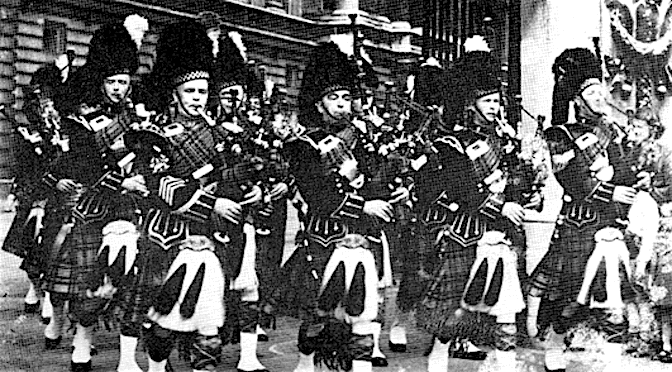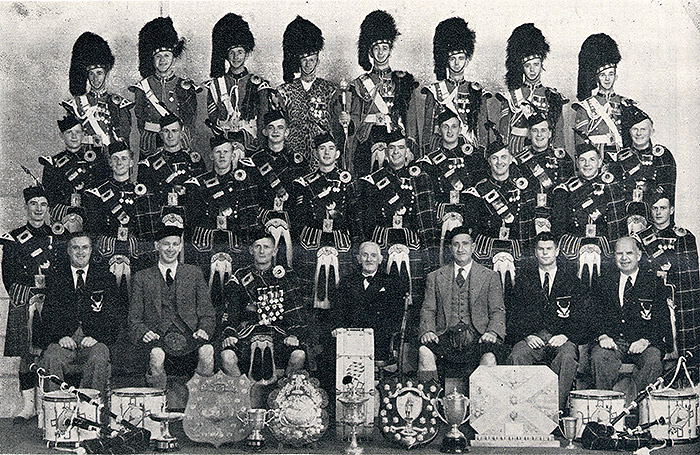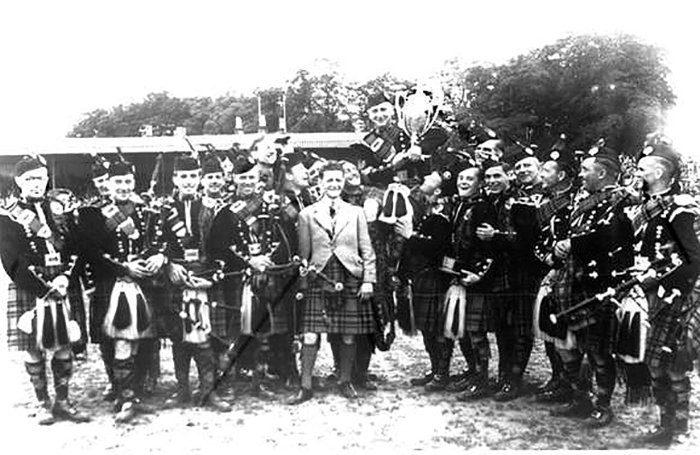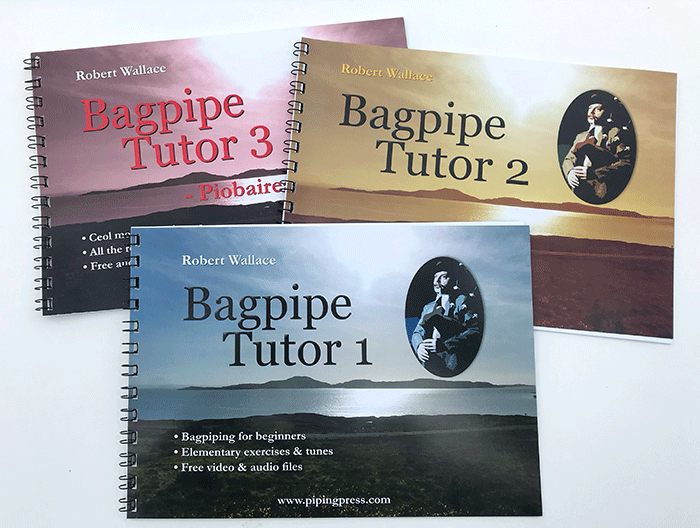
The Second World War interrupted pipe band contests, which resumed in 1946. In 1947 the Scottish Pipe Band Association decided to take the World Championship away from Cowal as they had had a good offer from Edinburgh City Council which wanted it to be held there to coincide with the new Festival.
Cowal refused to give up the Championship or hand over the trophies, and after a lot of meetings and bitter arguments the outcome was that two World Championships were held in 1947, one at Cowal where the Glasgow Police were the winners, and the other in Edinburgh, won by Bowhill Colliery.
By Jeannie Campbell
The bands that played at Cowal were expelled from the Association and not allowed to take part in other SPBA contests. Eventually the situation was resolved with the Cowal contest continuing as a major championship and the Association running their World Championship at various locations.
At the 1948 Worlds, which was held in Glasgow, there were contests for Grades One, Two and Three, a contest for Ladies’ bands and a contest for Juvenile bands. Separate contests for Ladies and Juveniles were only held at the larger contests.
During the 1950s pipe band associations were formed in many other parts of the world and some overseas bands visited Scotland, as, for example, the City of Wellington Pipe Band from New Zealand which came to Scotland in 1958.
[wds id=”2″]
From 1951 onwards judges were under cover and awarded points for intro, tone, breaks and execution, with comments to justify points deducted. The sheet was taken away before the next band came on.
By 1955 the top grade bands at Cowal had to submit three sets of March, Strathspey and Reel and the lower grades submitted one set.
In 1952 Seumas MacNeill wrote in the ‘Piping Times’ magazine that there were two ways to judge a pipe band contest. One was to sit in a tent with a stack of forms, neatly allocating points while each band plays right next to you.

The other was to submerge yourself in the crowd 50 yards away and tick off each band in the programme while carrying on an interesting conversation with your neighbour.
Of the two methods, those who adopted the second were much more sure of their final placings and had even been known to be sternly critical of the results put forward by those who had adopted the first method.
In 1956 the World Championships were held in Belfast, this being the first occasion on which the championships were held outwith Scotland. A Novice contest confined to Northern Ireland bands was held that year. A Novice event was a regular feature of many Irish contests at that time and in the following years.

At the 1957 Worlds there were two piping and one drumming judge for each grade and all bands played a march, strathspey and reel. Out of the five prize winners in Grade One, three played Abercairney Highlanders, one played Lord Alexander Kennedy and one played Dugald MacColl’s Farewell to France.
Three played Dornie Ferry, one Blair Drummond and one Bob of Fettercairn. Two played Pretty Marion, one Mrs MacPherson of lnveran, one Alick C MacGregor and one Highland Dirk. Glen Caladh Castle and Balmoral Highlanders were popular marches in the lower grades and Dornie Ferry and the Caledonian Canal were popular strathspeys.
- To be concluded.

Books
The best written piping tutor books in the world are available from the Piping Press Shop. They cover all aspects of light music and piobaireachd. The only way to start a piping career!
If it’s new music you are after check out the ‘Boys Brigade Collection’ by John Shone, or what about Niall Matheson’s superb digital book ‘The Fyrish Collection’? And don’t forget Robert Wallace’s acclaimed ‘Glasgow Collection’ with tunes such as the Detroit Highlanders, Mrs John MacColl, the Barlinnie Highlander, Granny MacLeod and many, many more.



















Have never seen this photograph of Muirhead and Sons before, my uncle Jim Todd is standing front row fourth from the left, brings back happy memories of going with my aunt and uncle to competitions in early 1960’s
Great stuff Jeannie, we need more of this!
Sadly, the wonderful glory days of the Cowal Championships reside firmly in history.
Perhaps, with a new post-Covid perspective on life and piping, the RSPBA and the Cowal Organising Committee could get together, resolve their differences, and re-introduce a major championship in Dunoon. Many people regarded Cowal as an equal with the Worlds, attracting over 30,000 visitors from home and abroad, and was a fitting end of season climax. It should not be beyond the wit of man for the “powers that be” to work together to make Cowal great again.